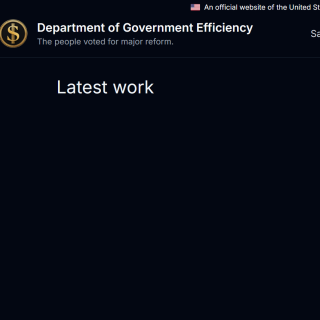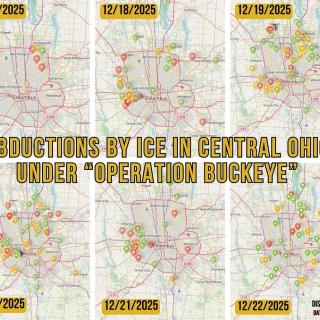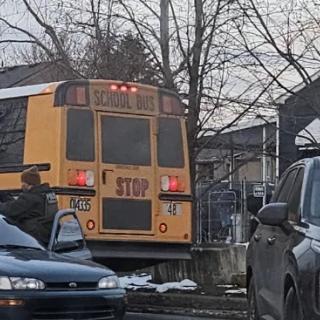Advertisement
As the FBI continues to scrutinize the relationship between Mayor Michael Coleman and Chinese business woman Jianhua Li, their investigation has exposed a tiny window into how local power brokers are wooing foreign nationals to ship their foreign-manufactured goods into Columbus’ booming and secretive Foreign Trade Zone hub at Rickenbacker airport. Where the corporate taxes are low and a significant number of workers are temporaries who “pick pack” the imported goods and paid $9-an-hour while being treated like second-class citizens, say local labor activists.
The Free Press earlier this year wrote about Rickenbacker’s “Free Trade Zone #138,” an FTZ that by all accounts is growing into a juggernaut. In 2013 over $6.3 billion worth of merchandise was imported into Rickenbacker, ranking it in the top-ten for the nation’s 177 FTZs.
And like all FTZs, the massive runways and warehouses at Rickenbacker provide a triple dose of exploitation by connecting super cheap manufacturing labor overseas to cheap logistics labor in America, where our government provides generous tax breaks to the corporations that are simply purchasing and transporting these goods from other countries into Rickenbacker. Some of the largest corporations utilizing the Rickenbacker FTZ are L Brands (Victoria Secrets), the Gap, Abercrombie and Fitch and Walmart, along with other big box retailers.
Ms. Li of Beijing owns a medical goods company that manufactures hemorrhoid therapy devices and hospital-type patient beds in China. She sought to import her goods through Rickenbacker but her request was rejected by federal officials. Nevertheless, the city’s Development Department and its “Asian Expert,” Bob Hsieh, tried to persuade Ms. Li to utilize the Rickenbacker FTZ presumably at the request of Mayor Coleman.
What makes this noteworthy is that city officials, as confirmed to The Free Press by the city’s Development Department, are actively encouraging businesses, both foreign and American, to ship their imported goods through the Rickenbacker FTZ so to take advantage of both tax breaks and low labor costs.
Some Columbus labor activists who have been keeping a close eye on Rickenbacker, such as Cathi Steele of the Mid-Ohio Worker newspaper, say that local government officials who promote the Rickenbacker FTZ are in a sense two-faced.
She says these officials continue to claim that bringing businesses like Ms. Li’s to Columbus will create good jobs, as Mayor Coleman touted, but in reality the only jobs Ms. Li may have created were temp jobs for a group of Rickenbacker warehouse workers who would spend their $9-an-hour days pick-packing her product off a pallet and placing a price tag on it. These same officials will also promote Rickenbacker’s tax incentives behind closed doors, but then publicly bemoan that local and state budgets continue to shrink.
The Rickenbacker FTZ has a 1.66 percent tax on new capital investments, for example, which would be placed on a new warehouse built and owned by the Gap, for instance. This specific tax rate is one of the lowest nationally.
“The city and state are always complaining about having no money, so why give so many tax breaks (at Rickenbacker)?” asks Steele. “It’s a 15-year property tax abatement at 100 percent. There’s importing, inventorying and warehousing tax breaks.”
Steele says the Rickenbacker FTZ, even though essentially a federal entity, is also very guarded, refusing to publicly say, for example, how many temps work within the FTZ. But anecdotally through interviews with those who have worked there, she discovered that one Japanese company was stringing along temps with promises of full-time employment but when their probationary period neared its completion, they were unwittingly placed on a “DNR” list, as in “Do Not Return,” which is a play on “Do Not Resuscitate.”
Also heavily promoting Rickenbacker is the private nonprofit development organization Columbus 2020, which is a collaboration of over 300 local businesses. The Columbus 2020 “Factbook 2015” says the regions 70,000-plus transportation and logistics workers, many working within the Rickenbacker FTZ, rank first nationally in lowest average wage ($14.64) and second lowest nationally in unionization representation (3.1 percent).
Columbus 2020 also pushes Rickenbacker by advertising the apparent belief that Columbus is one of the 12-most hardest working towns in America, as designated by SpareFoot.com, a website that specializes in warehousing and logistics. SpareFoot.com bases this in part on the (apparent) fact that Columbus “has one of the highest-percentages” of dual income families.
So in a way, Columbus 2020 loves to the tell the world that working-class Central Ohioans work the hardest for the lowest pay, have no pesky third party to protect their interests as employees, and furthermore, the region is a lucrative place for daycare providers.
But what angers local labor activists even more is the fact its own city government is going to bat for Rickenbacker, which no doubt marginalizes the local and domestic economy by tempting many area business owners to sell-out and send their manufacturing or production overseas, and on top of this, provide them an unfair advantage when they go overseas.
The Free Press spoke with the city’s Development Department’s director Steve Schoeny asking him to what extent does his department promote the Rickenbacker FTZ to both foreign nationals and American businesses. A definitive answer was not provided, but Schoeny insisted that while they may encourage using Rickenbacker, that doesn’t mean they are advertising for cheap labor.
“We don’t promote cheap labor, it’s not a part of what we sell,” he said. “We (also) don’t incentivize for using temporary workers.”
He adds they are asking companies to base manufacturing in Central Ohio, saying using Rickenbacker is simply the nature of today’s business model.
The Free Press also asked Schoeny about his department’s Asian Expert, and what exactly does the position entail.
“The Asian expert part of Bob’s (Hsieh) job is actually a relatively small part of his job,” he said. “His main job is as loan portfolio manager. He’s just somebody we have in-house who has some longstanding experience and talent, and so when we get someone in with some interest in Asian investment we look to Bob.”
He added that Hsieh isn’t working “hundreds” of projects related to Asia, and not even “tens” of projects. Hsieh mostly spends his time managing 170 loans to small businesses, said Schoeny.
The news that Columbus is becoming a logistics giant for foreign goods made-on-the-cheap is not entirely gloomy or one-sided. There is a push-back in progress.
The Ohio State Fisher College of Business has for several years administered the Ohio Export Internship Program, which has helped small-to-medium sized Ohio companies to advance their export prowess, and increasing earning for some companies by millions. And according to the federal government’s International Trade Administration, Central Ohio businesses exported $6.2 billion in merchandise, with chemicals and transportation equipment being the largest exports. But out of all major US metropolises, Central Ohio ranks 48th in exports.
Nevertheless, when it comes to the city’s Development Department, which Mayor Coleman turned to so to help Ms. Li import her medical goods into Rickenbacker, the department has no export program or effort directly in-house, says Schoeny.



